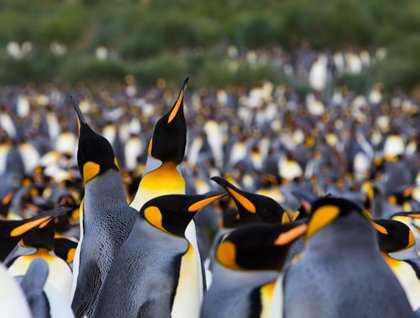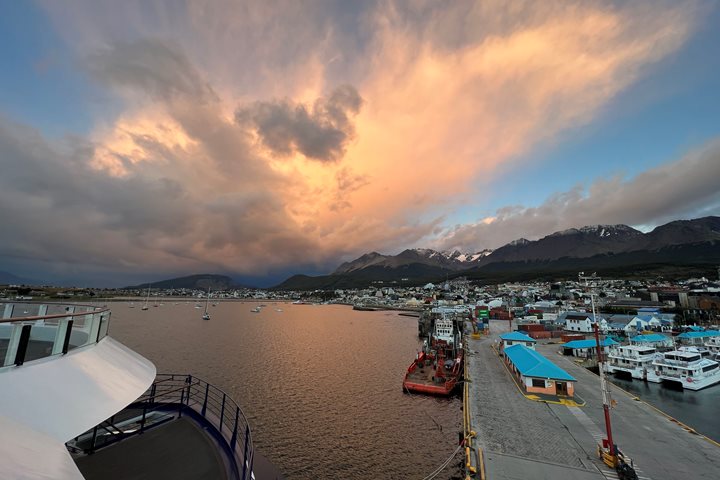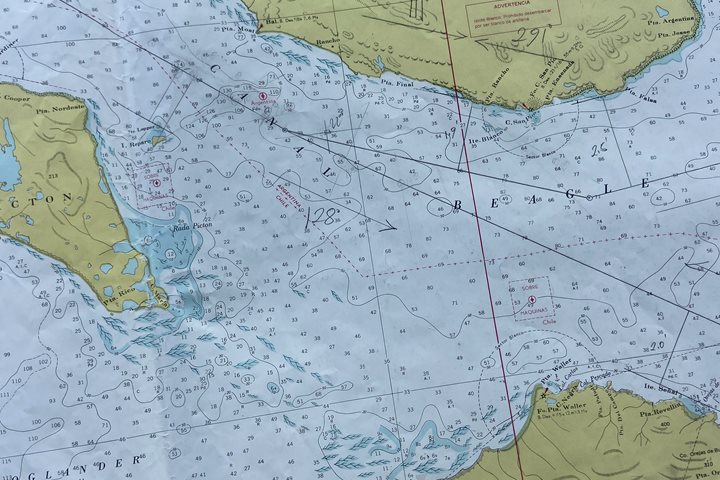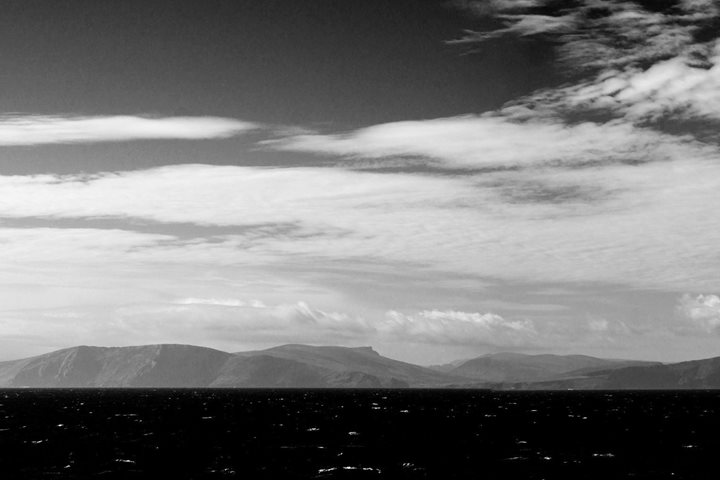After making great speed in smooth seas since leaving Antarctica, we arrived in South Georgia early this morning. Taking advantage of our quick passage and our great weather, it was decided to try and pack in as much as possible. And we did! From pre-sunrise to sunset, today was one of those days where everything was perfect. We did an amazing amount of exploring and experienced South Georgia at its finest!
Pre-sunrise saw most of us making our way ashore for our first landing at South Georgia at Gold Harbor. This place is South Georgia in a nutshell. King penguins cover the beach, with a nesting colony containing small chicks and eggs. Also, young “oakum boys” whistled energetically, many in odd stages of molt. Meanwhile, other kings were active in courting and mating, putting on quite a show. The beach was also filled with gentoo penguins, elephant seals, skuas, and sheathbills. As well, thousands of fur seal pups roam the beach and tussock grass adding a bit of chaos. All of this takes place with some dramatic scenery. A massive glacier cascades down as a backdrop while tall pointy peaks stick up even higher. What a start! And, the weather was sunny and warm with no wind.
After lunch, we explored Cooper Bay first by Zodiac and then walking. Four penguin species are found here, but we focused especially on the macaroni penguins. These are the most abundant penguin in South Georgia, but typically quite difficult to view at a colony. We climbed a hill and entered some muddy tussock grass, but soon were on the edge of a noisy, raucous colony. As we sat quietly enjoying the braying pairs, the gorgeous yellow tufted penguins would waddle around us. Below us, the colony was emitting a continual roar, and behind it a view out to many tabular icebergs.
Towards dinner time, we began approaching some of these tabular icebergs that are breaking off of a larger one recently measured at 17 miles long! Birds were everywhere, swarming in the thousands as they were feeding on krill. A humpback whale drew our attention, but we quickly became distracted by a larger blow. BLUE WHALE! Soon, we had three blue whales including a mother and calf. The captain positioned the ship for amazing views, even changing our background to first include icebergs, and later the tall peaks of Drygalski Fjord. At least 6 blue whales were spotted, an amazing sight to see for sure.
As the sun began to set, the National Geographic Orion wove through the iceberg graveyard of the pieces breaking off of the massive tabular iceberg. What a day!







